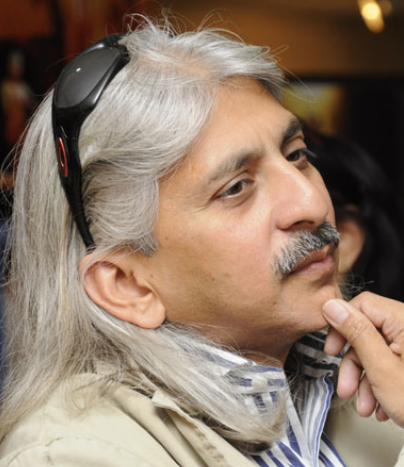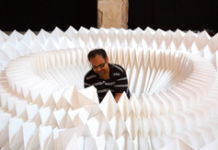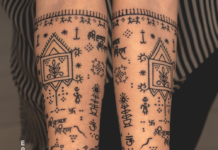By Sanjoy K Roy
In 1999, as part of a British Council showcase programme, I travelled to the Edinburgh Festival and that set in motion the idea of creating platforms for Indian contemporary and classical art forms across the world.
Working closely with the Festival Fringe, the International Film Festival, the Edinburgh Tattoo and the Edinburgh International Festival, we created an annual offering of work, enlarging our presence from six productions to 16 in a short period. Many thought we were mad, but our long-term objectives paid off in more ways than one.
We presented an array of artists: Aditi Mangaldas, Daksha Sheth, Birju Maharaj and Malavika Sarukkai. Mrigaya, the world music group which went on to win the Herald Angel Award at Edinburgh in 2002 and a 5-star review from The Scotsman, Indian Ocean, Lillette Dubey and the Primetime Theatre Group, Adi Shakti, Lushin Dubey, Dadi Pudumjee and the Ishara Theatre Company, are some more names I recollect who were on our entourage. Shah Rukh Khan made his way to Edinburgh in a celebration of the best of Indian arts.
It took some convincing to get the Edinburgh International Film Festival to agree to move Shah Rukh’s “In Conversation” with Nasreen Munni Kabir to a larger venue. They cited examples of having presented the biggest stars, including Sean Connery, in a 300-seat venue. Tickets went on sale and sold out minutes after the box office opened, only to be resold at £100 a ticket! The news made it to The Times front page and the festival organisers, somewhat embarrassed, moved the venue to a 1,000-seat auditorium. Huge crowds gathered at the festival venue. At the after-party, we had to barricade Shah Rukh in a corner, with tables and bouncers guarding him. The Edinburgh festivals hadn’t quite seen something like this before! They were ignorant of work from India as very few shows had ever travelled out.

The year we presented Ishara Puppet Theatre’s “Transposition”, the infamous liquid bomb incident took place at Heathrow as we landed. Having being evacuated from the airport and shipped to Gatwick, we finally arrived in Edinburgh after a 16-hour delay, only to find that 24 of our 30 outsized puppet boxes and bags had been lost! Each day was spent at the airport warehouse searching for luggage. Five days and three cancelled shows later, the BBC ran a story on our predicament. Hours later, a passenger telephoned Dana Macleod, our coordinator in Edinburgh, to say strange-shaped bags were going around the carousel with stickers bearing her name. The show was back on the road!
Investments in shows and festivals in those early days meant that year-on-year, our balance sheets were red. Co-presenting with existing festivals led to some degree of success, with annual presentations in Singapore, Wellington, Perth and Melbourne. Much of this was a result of networking at the Edinburgh festivals and setting out a plan for collaborations, a strategy we adopted for the next few years. As our footprint grew through Asia to include Hong Kong, Korea and Indonesia, we began to look westwards.
Prompted by our then Consul General, Navdeep Suri, we set up the Shared History Festival in South Africa, to bring about an awareness of a new India and the many opportunities it offered, amongst the one-million strong Indian diaspora. We collaborated with the city of Johannesburg’s annual festival, Arts Alive, to bring about resurgence in the crime-infested Central Business District (CBD) area of New Town. The city planned to use the arts to re-populate the CBD and reduce crime and bring back the local populace. With audiences returning to theatres, New Town has now seen a rise in property prices, new businesses opening and residential blocks being re-built. In Durban and Johannesburg, the arts community and the diaspora who had earlier rejected everything Indian began rediscovering and celebrating their roots. Driven by their need to trace their history many have, since then, travelled back to India.
We sought new opportunities in Austria, Germany, Italy and Spain, working through agents and driving box office sales to make projects economically viable.
We produced “Bollywood Love Story”, a musical, to reach new audiences. We were amazed to discover how small towns like Einbeck, Stuttgart, Eindhoven and larger ones like Florence, Barcelona and Stockholm had a huge appetite to celebrate and embrace Indian culture. Local arts-attending audiences came to our celebration dressed in Indian attire, belting out words of songs they didn’t understand and eating their versions of Indian food. Exporting Bollywood should be the mainstay of our foreign missions in order to capture hearts and minds of people across the world. From Russia to Egypt and China through Canada I have seen an increasing appetite to present and understand the best of Indian culture.
In today’s polarised world, it is imperative that we use the arts as a window into other cultures, traditions, history and a way of working. The arts know no language and have a universality that allows the viewer to seamlessly absorb and appreciate new experiences. A few years ago, the Globe Theatre, as part of the Cultural Olympiad, commissioned an array of exciting productions played out from Afghanistan and India to Romania and Belarus. Each was distinct and brought to the fore, cultural differences and yet was bound together by the universal language of theatre and performance. Audiences who attended may not have understood the nuances of the languages, but this did not detract them from enjoying what they were witnessing. Pia Behrupiya by Company Theatre was a brilliant piece of original stagecraft. Based on Shakespeare’s “Twelfth Night”, the ensemble cast sang, danced and created magic at the Globe. Last year as part of “India70@UK” we were able to present some of the finest of contemporary theatre, dance and music at premium arts venues including the Royal Festival Hall, Barbican Theatre and the Globe.
As the Indian economy continues to grow, the world is curious about India and everything Indian. From exotic locations: Ladhak to Hampi and Ajanta & Ellora to Murshidabad and Varanasi, to a diverse, dynamic and an extremely alive cultural matrix, we have a lot to offer. India needs to create a counter-narrative to that of rapes, murders and religious extremism, absconding businessmen and less then scrupulous business practices that make headlines the world over. The arts can be an anchor for this emerging narrative; not only do they create jobs but also educate and enlighten.
As the third industrial revolution fades away and we look to the fourth, which will be the coming together of creativity and technology, India is well-placed to be a world leader. Unfortunately, our policies and government are yet to seize the moment and set in place incentives and a route map to the future.
(Sanjoy K. Roy, an entrepreneur of the arts, is the Managing Director of Teamwork Arts, which produces over 25 highly acclaimed festivals across 40 cities worldwide and includes the world’s largest free literary gathering — the annual ZEE Jaipur Literature Festival)













